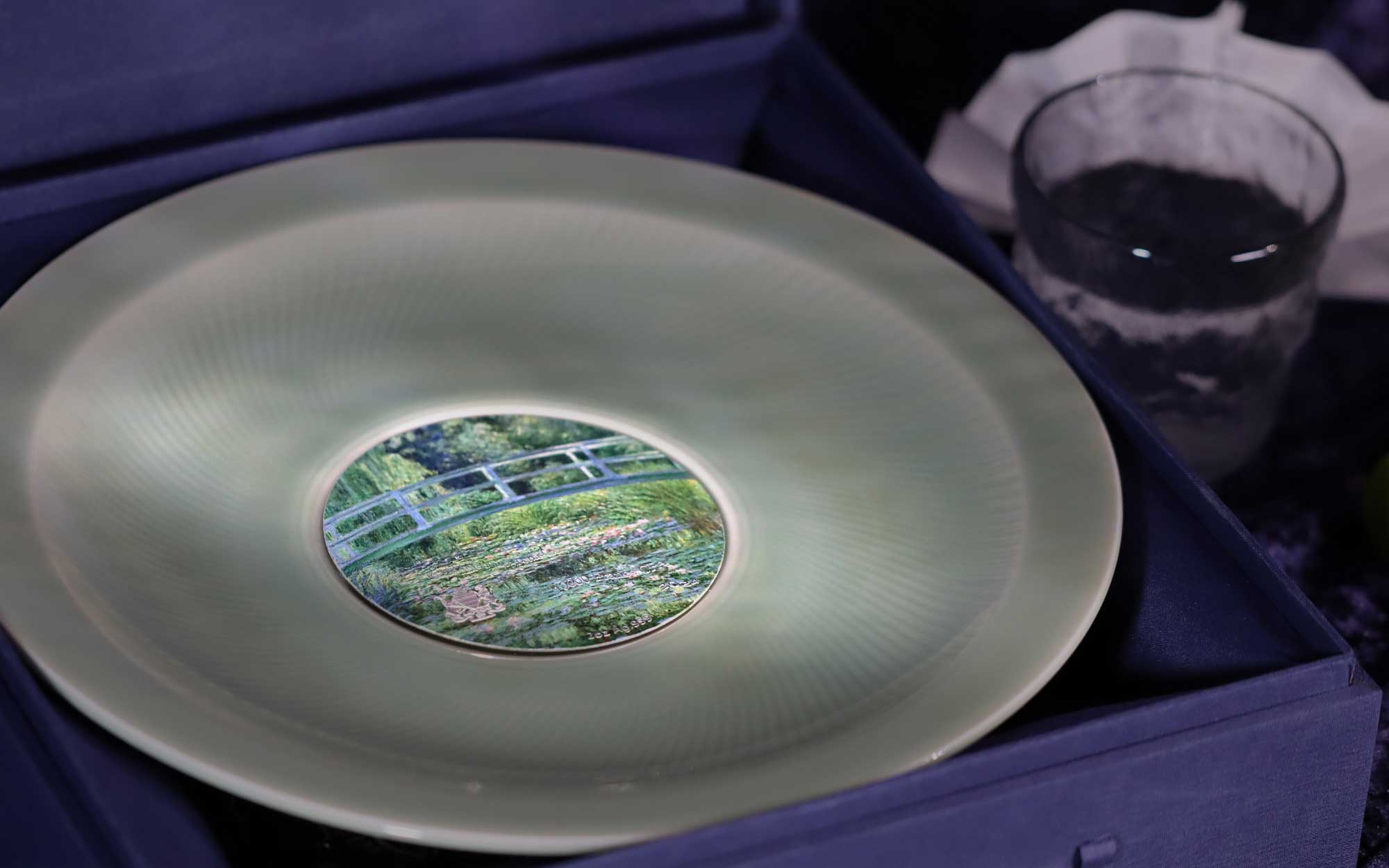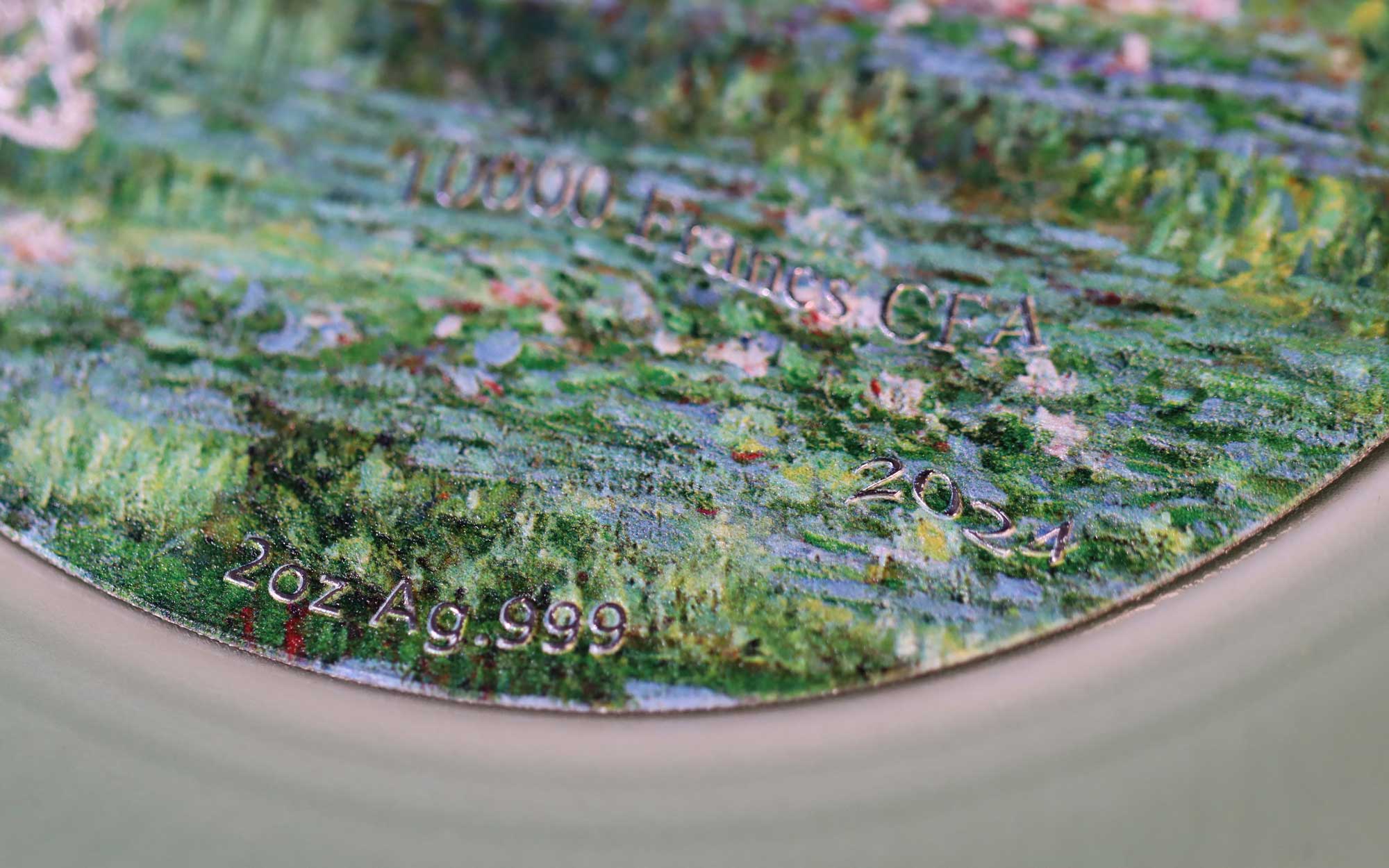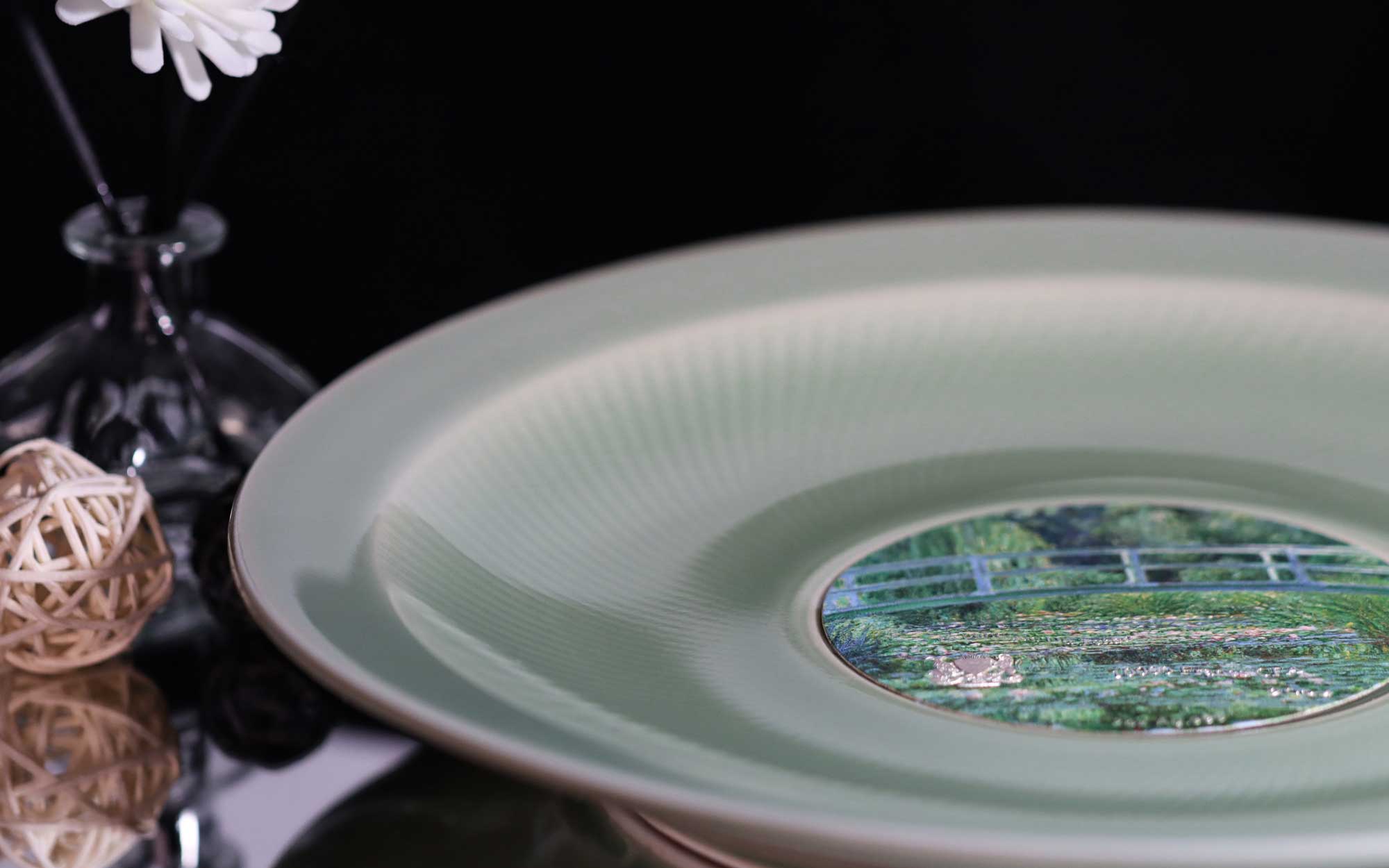The green tinted Celadon Porcelain is the backdrop for an extraordinary coin featuring Claude Monet’s ‘Water-Lily Pond’ painting
After the impressive debut release of a 3.6 kg, 188 mm diameter copper-cored coin last month, MK are back with what we can only describe as another extraordinary coin. This one is, however, completely different in just about every way when it comes to fabrication, and attempts to merge the artistic styles of two disparate cultures.
The French Impressionist painter, Claude Monet, is a star of the fine-art world, and his landscape paintings of the Parisian and Normandy region, have propelled him to legendary status. He is perhaps most famous for the work he produced in the 1910s and 1920s, painted at his property in Giverny, where he’d created a large water-lily pond, which became the focus for his inspiration.
The coin in this release takes a portion of perhaps the most famous of them all, called ‘Bridge over a pond of water lilies’. The coin is coloured, and manages to successfully captures the pastel palette of the original. Because of the way the coin is mounted, there is no obverse as such, and the coat-of-arms of the issuer, Chad, and the denomination, are placed on the same face as the art, although not in a particularly intrusive way. It’s two-ounces of silver, but nevertheless reaches an impressive 100 mm in diameter.
What makes this issue so extraordinary is the setting for that coin. Produced at the XiaoXianTan kilns in China’s Zhejiang Province, the emerald green-tinted pottery is a classic example of the craft, with this type of porcelain produced in the region for at least 2,000 years. The near-300 mm plate has that greenish glaze, working well in conjunction with the coloured coin. The bottom of the plate carries a red-highlighter maker’s mark. The coin is embedded in the centre, not simply attached, but designed to be there.
The whole thing comes beautifully presented in a themed box. Now, we’re the first to admit that this kind of issue is not for everyone, but collectors of the unusual will surely find much to admire here, and it’s clearly a labour of love for the producer, not something knocked up over a weekend. An amazing issue for the few, the mintage of just 75 pieces is super-low. Most will be sold in the Asian market, but French dealer Coins & More is, again, doing the honours elsewhere, although in tiny numbers. It’s selling just shy of €700.
MINTS DESCRIPTION OF THE CELADON PROCESS
Celadon porcelain is a type of ceramic that is known for its distinctive pale green glaze. The process of making celadon porcelain typically involves several steps, including:
1. Clay Preparation: High-quality clay is selected and prepared, often by mixing different types to achieve the desired characteristics.
2. Shaping: The clay is shaped into the desired form, whether it be a bowl, vase, plate, or another item.
3. Drying: The shaped clay is left to dry thoroughly. This can be done naturally, but in modern production, controlled drying processes may be used.
4. Bisque Firing: The dried clay is fired in a kiln at a relatively low temperature. This process is known as bisque firing, and it hardens the clay, making it more stable for glazing.
5. Glazing: Celadon porcelain is known for its characteristic pale green glaze. The glaze is applied to the bisque-fired item. It is made from a mixture of specific minerals and has a unique composition that produces the desired colour when fired.
6. Glaze Firing: The item is fired again, this time at a higher temperature, to melt the glaze and create a smooth, glass-like surface. The specific firing temperature is crucial in achieving the celadon’s signature colour.
7. Cooling and Inspection: After the glaze firing, the item is allowed to cool. It is then inspected for any imperfections or flaws.
8. Final Touches: Depending on the design, additional details or decorations may be added at this stage.
9. Final Firing (Optional): In some cases, a final firing may be done to set any additional details or decorations.
The term “casting” is not commonly associated with celadon porcelain. Instead, it is more often used in processes like slip casting, where liquid clay (slip) is poured into a mold to create the shape. Keep in mind that specific techniques and variations can exist within the celadon-making process, and different artists or workshops may have their own unique methods. This is why XiaoXianTan is recognised at a national level in China, due to the special technique enabling this colour
| SPECIFICATION | |
| DENOMINATION | 10,000 Francs (Chad) |
| COMPOSITION | 62.2 g of silver, Celadon Porcelain |
| DIMENSIONS | 100.0 mm (coin) 295 mm (plate) |
| FINISH | Coloured |
| MODIFICATIONS | Embedded in porcelain |
| MINTAGE | 75 |












Leave A Comment